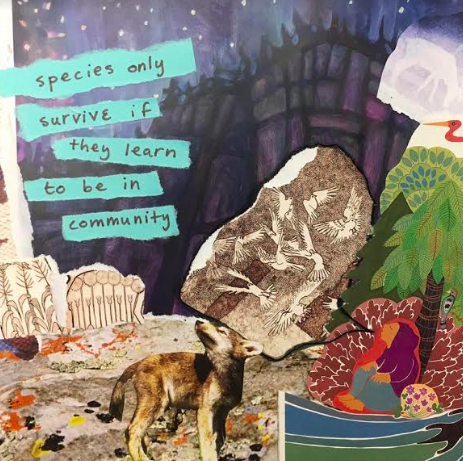What Church Might Be – A Role Model …and A Poem
Envisioning, imagining what Church could be in an age in which we desperately need the wisdom and insight of new inclusive leadership and ministry, including our own, I came upon this article called Quest for the Sacred: Walk in the Church of the Woods by Meggen Watt Petersen. She describes a church in New Hampshire that has no pews, no formal altar, no edifice at all. Led by Episcopalian priest, Stephen Blackmer, the community meets each week in the woods of New Hampshire, rain, snow, or shine. The “homily” part of the service is, in fact, twenty minutes of “sacred aloneness” walking in the wilderness followed by brief descriptions by individuals of what they discovered internally or externally. Through the silent walk and community sharing, Reverend Blackmer believes, “it’s the Earth speaking and people are listening to each other.”
There is also a formal liturgy with Biblical readings and prayers, but, besides the silent “homily” and communal sharing, it is their version of Eucharist that I especially loved: “At the end of the service is communion, and the first bit of bread and the last drops of wine are offered to the Earth. Thus, the congregation expands to include the moose, fox, trees, and rocks. Each becomes part of the congregation and the life of prayer.” Blackmer sees this form of communion as an essential affirmation of the sacredness of all creation, helping all, through liturgy, to dedicate ourselves to care for the Earth.

The ritual is the same each week, but, because of its woodland location, the experiences of Church are entirely different. Blackmer’s concept of the role of priest contributes to this difference – and is inspirational for aspiring priests of all genders to contemplate – “Priest has a particular meaning – the role of Priest is to lift up the sacredness of the world so people can see it and participate in it.” In a world bombarded with words, it allows silence to speak – perhaps as God does – beyond language.
You may have noticed that I am inordinately fond of poetry, and so I cannot end this reflection without noting the passing of American poet, Mary Oliver. She saw so clearly the sacredness of nature and our intimate connection with it. Here is one of her most famous and beloved poems.
Wild Geese
You do not have to be good.
You do not have to walk on your knees
for a hundred miles through the desert repenting.
You only have to let the soft animal of your body
love what it loves.
Tell me about despair, yours, and I will tell you mine.
Meanwhile the world goes on.
Meanwhile the sun and the clear pebbles of the rain
are moving across the landscapes,
over the prairies and the deep trees,
the mountains and the rivers.
Meanwhile the wild geese, high in the clean blue air,
are heading home again.
Whoever you are, no matter how lonely,
the world offers itself to your imagination,
calls to you like the wild geese, harsh and exciting –
over and over announcing your place
in the family of things.

3 Responses
Such a lovely and inspiring reflection, Ellie!
Thank you!
We need an integral anthropology for an integral ecology:
http://www.pelicanweb.org/solisustv14n05page24.html
For the church to become a role model, the ordination of women should be an integral part of an integral anthropology.
Like water on the rock! Thank you Ellie for pouring the water of integrity and thank you Luis for receiving it!